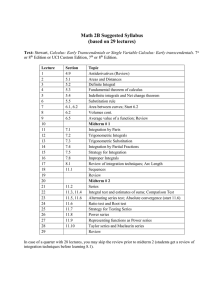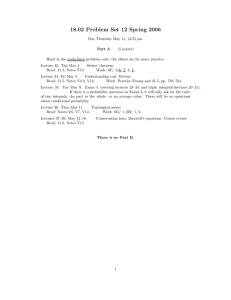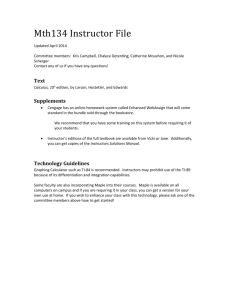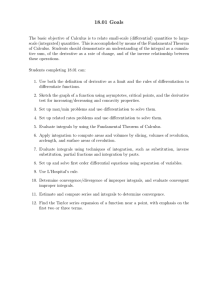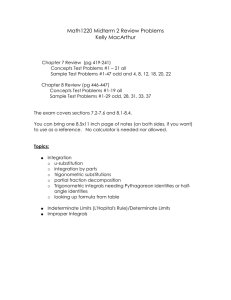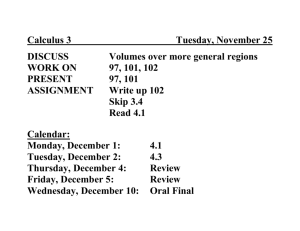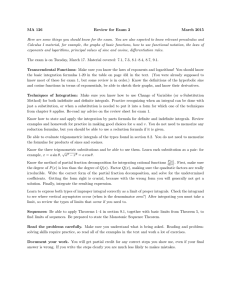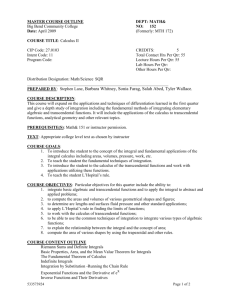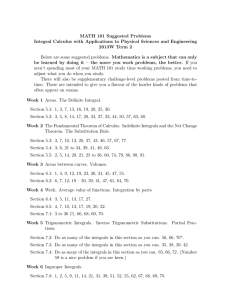MATH 142 Calculus II
advertisement
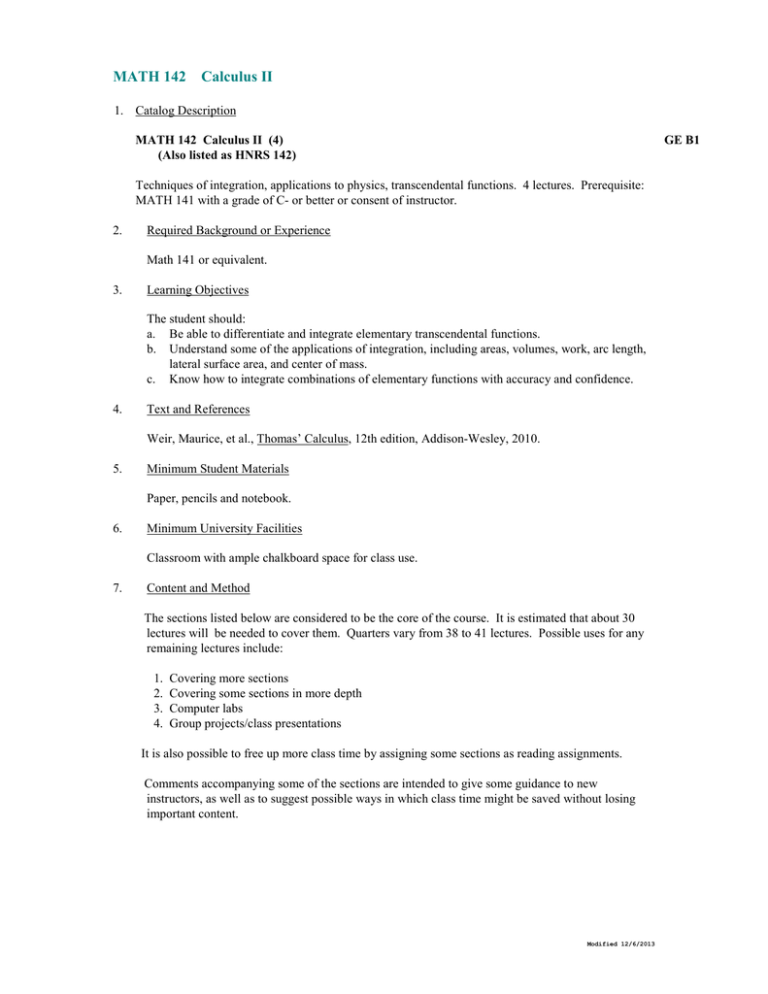
MATH 142 Calculus II 1. Catalog Description MATH 142 Calculus II (4) (Also listed as HNRS 142) GE B1 Techniques of integration, applications to physics, transcendental functions. 4 lectures. Prerequisite: MATH 141 with a grade of C- or better or consent of instructor. 2. Required Background or Experience Math 141 or equivalent. 3. Learning Objectives The student should: a. Be able to differentiate and integrate elementary transcendental functions. b. Understand some of the applications of integration, including areas, volumes, work, arc length, lateral surface area, and center of mass. c. Know how to integrate combinations of elementary functions with accuracy and confidence. 4. Text and References Weir, Maurice, et al., Thomas’ Calculus, 12th edition, Addison-Wesley, 2010. 5. Minimum Student Materials Paper, pencils and notebook. 6. Minimum University Facilities Classroom with ample chalkboard space for class use. 7. Content and Method The sections listed below are considered to be the core of the course. It is estimated that about 30 lectures will be needed to cover them. Quarters vary from 38 to 41 lectures. Possible uses for any remaining lectures include: 1. 2. 3. 4. Covering more sections Covering some sections in more depth Computer labs Group projects/class presentations It is also possible to free up more class time by assigning some sections as reading assignments. Comments accompanying some of the sections are intended to give some guidance to new instructors, as well as to suggest possible ways in which class time might be saved without losing important content. Modified 12/6/2013 Content No. of Lectures CHAPTER 5 – 5.5 5.6 INTEGRATION Indefinite Integrals and the Substitution Method (only cover substitution) Substitution and Area Between Curves 2 CHAPTER 6 – 6.1 6.2 6.3 6.4 6.5 APPLICATIONS OF DEFINITE INTEGRALS Volumes Using Cross-Sections Volumes Using Cylindrical Shells Arc Length Areas of Surfaces of Revolution (deemphasize formulas) Work and Fluid Forces (cover at least one problem type; pumping water is recommended) Moments and Centers of Mass (the subsections on fluid forces and the Theorems of Pappus may be skipped) 9 TRANSCENDENTAL FUNCTIONS Inverse Functions and Their Derivatives Natural Logarithms Exponential Functions Exponential Change and Separable Differential Equations (may be postponed until right before Section 9.4) Indeterminate Forms and L’Hôpital’s Rule Inverse Trigonometric Functions (emphasize inverse sine and tangent functions) 9 6.6 CHAPTER 7 – 7.1 7.2 7.3 7.4 7.5 7.6 CHAPTER 8 – 8.1 8.2 8.3 8.4 8.6 8.7 TECHNIQUES OF INTEGRATION Integration by Parts Trigonometric Integrals Trigonometric Substitutions (cover at least two substitutions) Integration of Rational Functions by Partial Fractions Numerical Integration (cover at least one of the approximation methods; deemphasize formulas) Improper Integrals (emphasize unbounded domains) 9 Note: it is recommended that some time be spent teaching strategies of integration. Students should be able to decide which integration technique (or combination of techniques) is the most appropriate to apply to a given integral. CHAPTER 9 – 9.4 FIRST-ORDER DIFFERENTIAL EQUATIONS Graphical Solutions of Autonomous Equations (only cover logistic population growth; cover 7.4 now if not done previously) Total 1 _____ 30 Method Largely lecture with chalkboard illustration of the discussion along with supervised work and individual conferences. 8. Methods of Assessment The primary methods of assessment are examinations, quizzes and homework. A comprehensive final examination is required. Students are expected to show their work, and are graded on the correctness of their answers as well as their understanding of the concepts and techniques.
